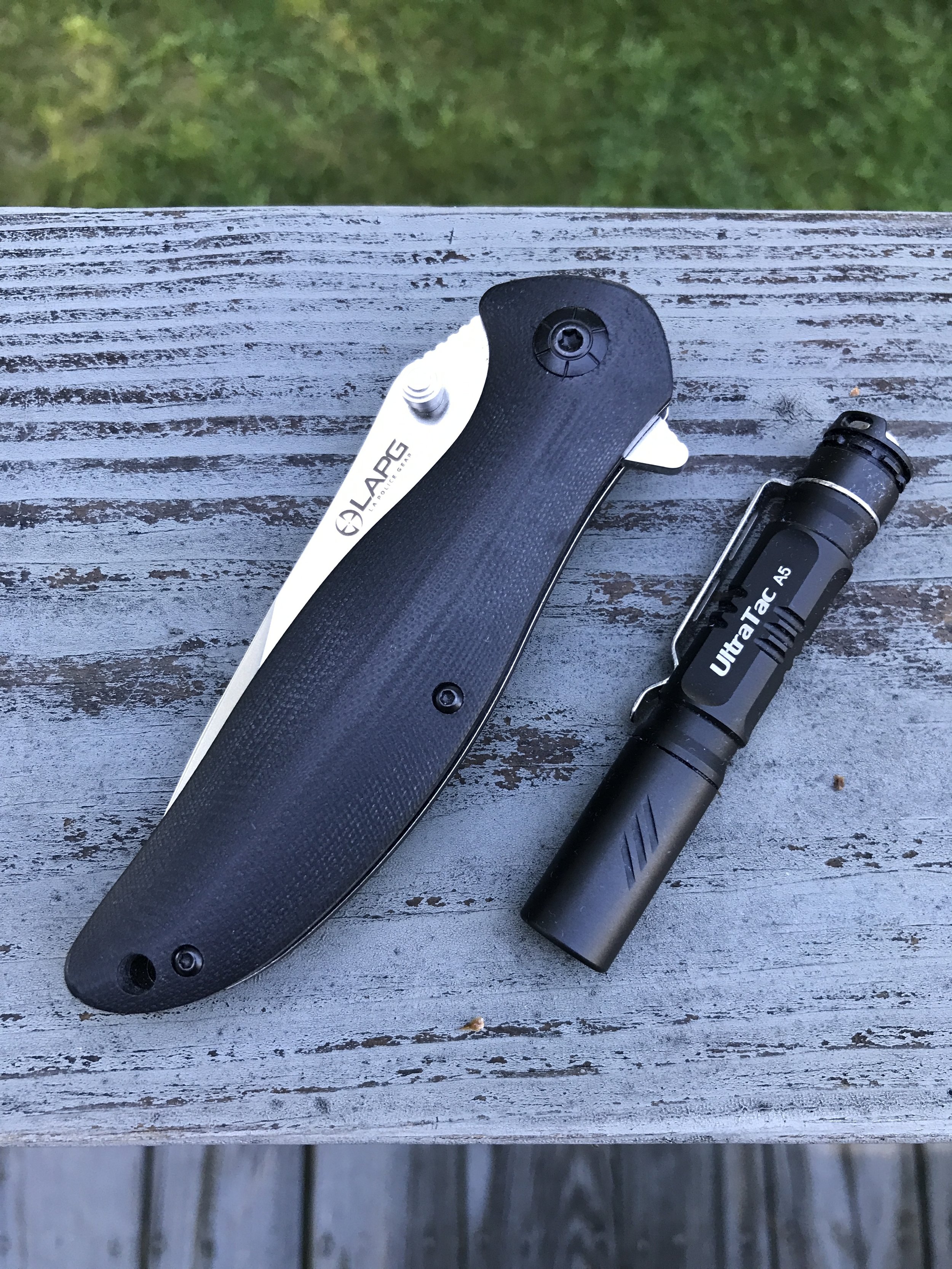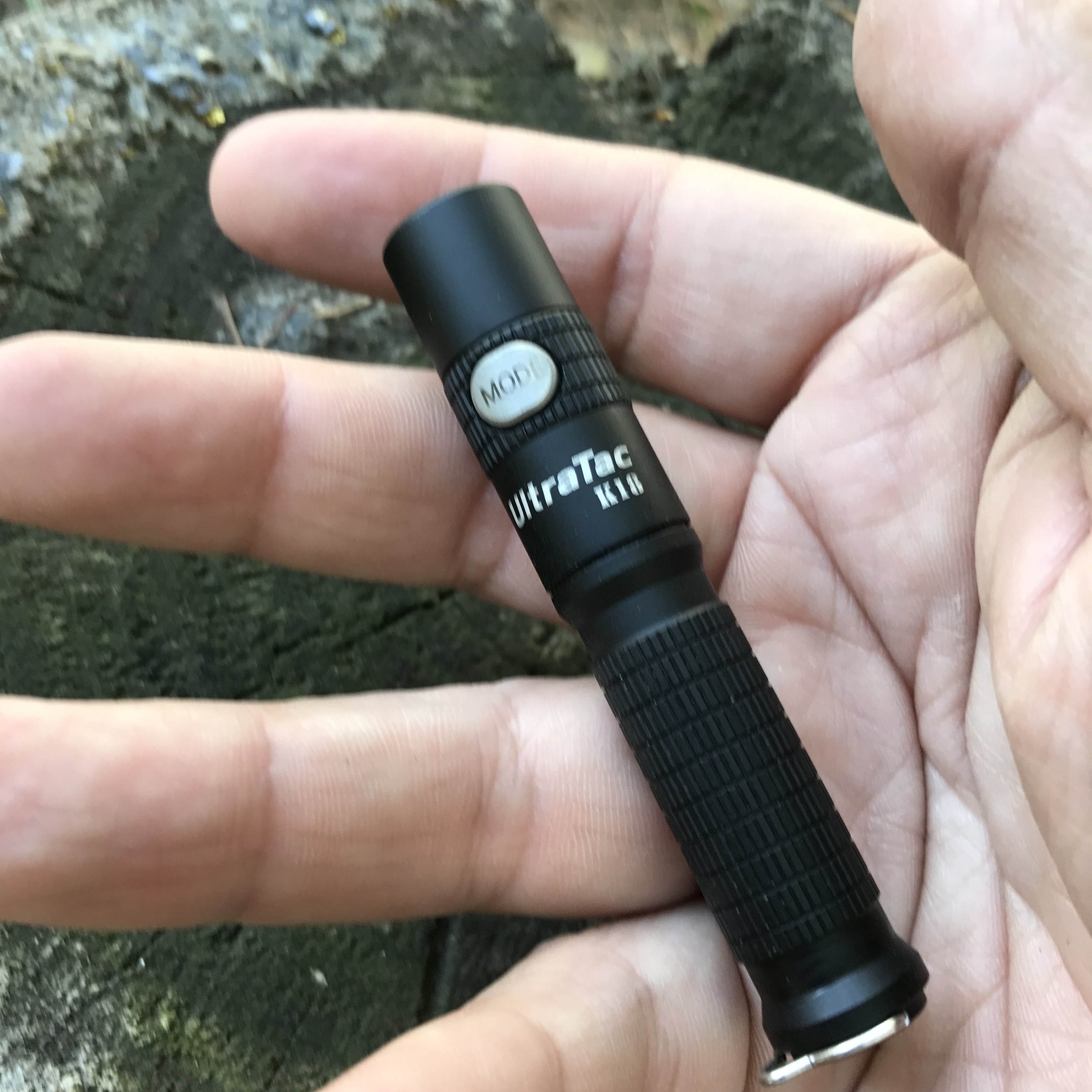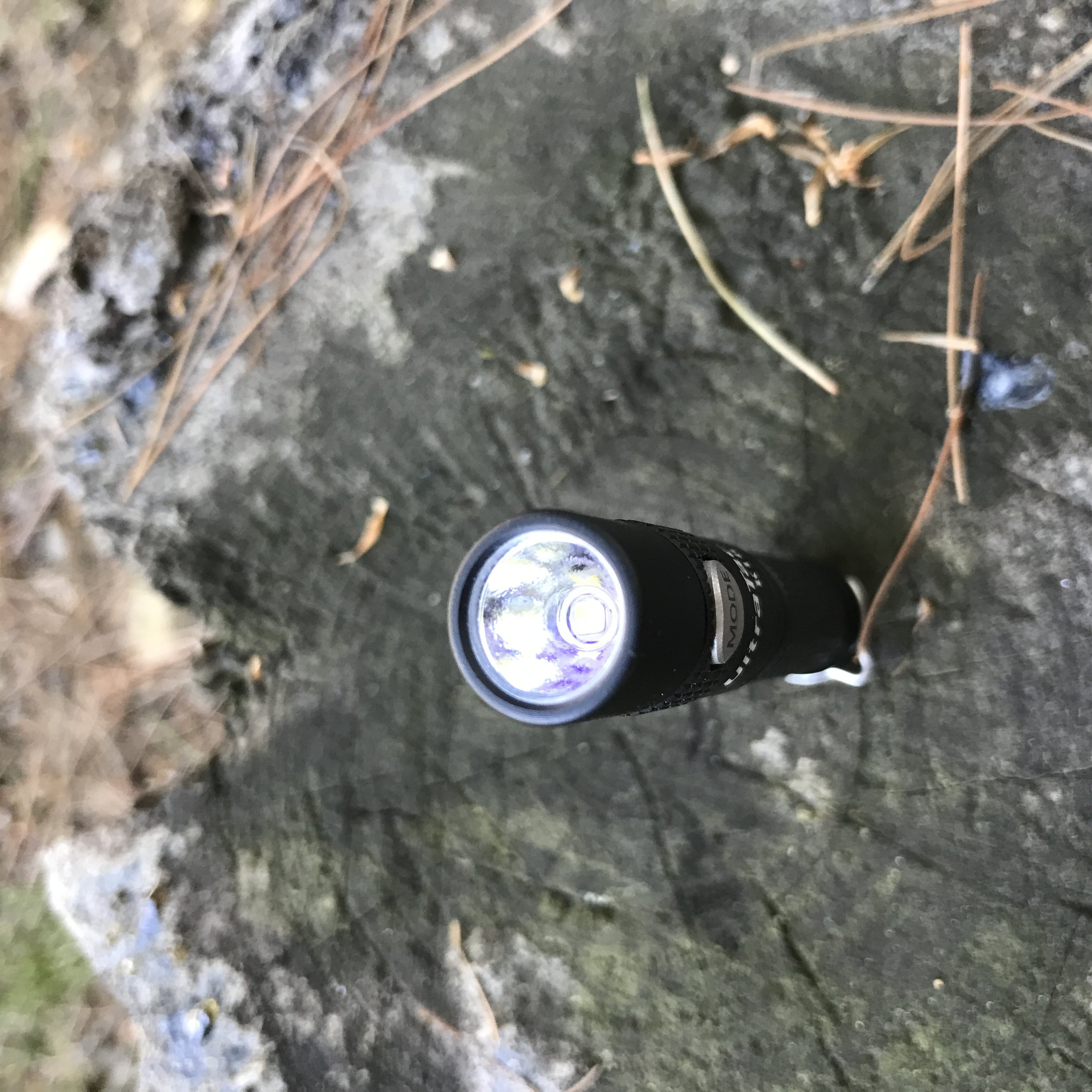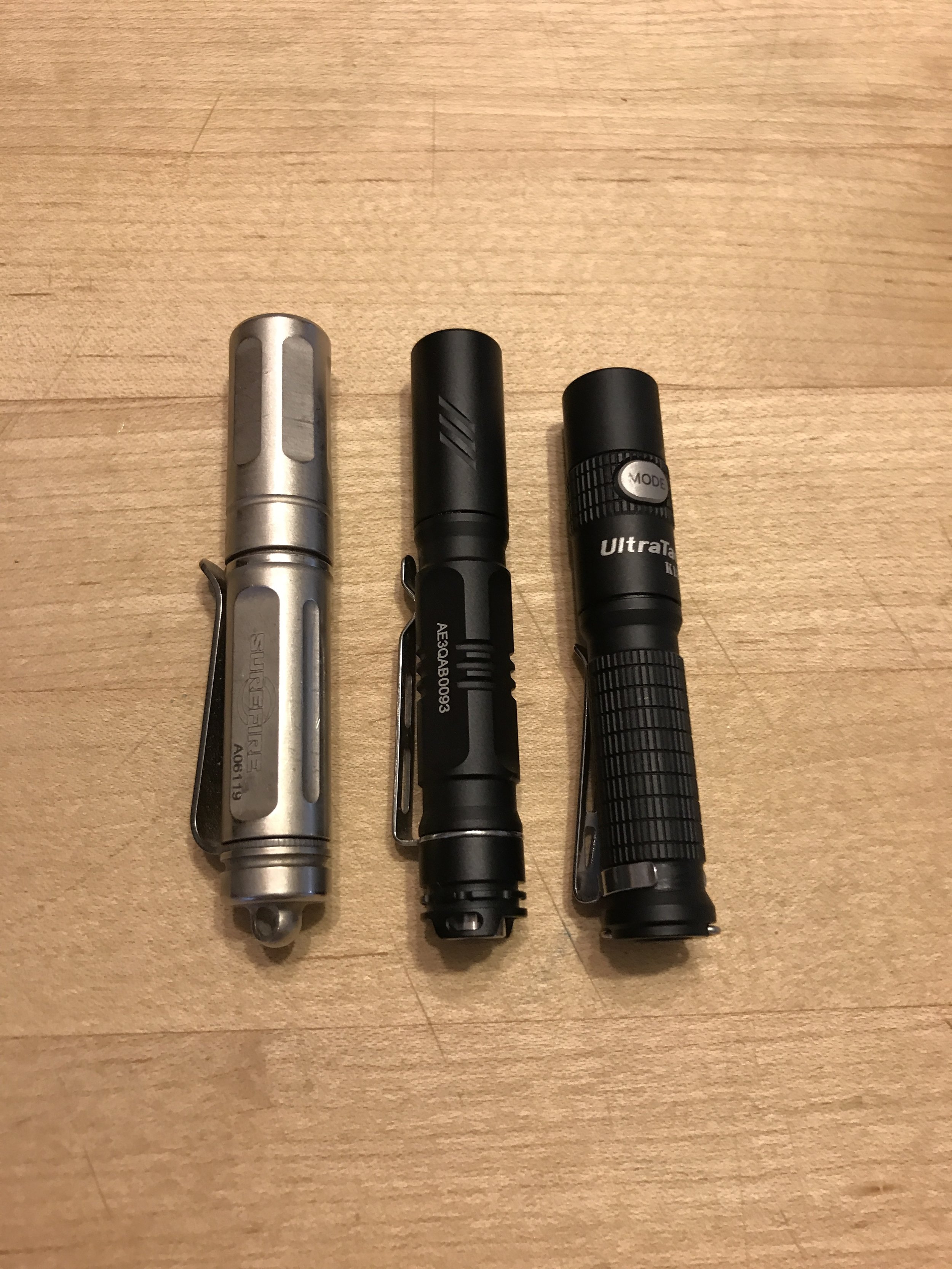UltraTac A5 and K18 Review
At some point you just throw up your arms and given in. There is simply no way to follow the small increases in lumens as the lodestone for light purchases. Once a week someone will release a new light with 5 lumen more than your current favorite. For a whole host of reasons, the lumens arms race is a sucker's bet.
But then Surefire teases an awesome light, the Surefire Titan Plus. It is one of two lights that represent Surefire's clear move into the EDC market, as opposed to putting out tactical lights that EDCers use. We all took a look and both the Titan and the Titan Plus looked good, but then we saw the specs. The Titan Plus boasted 300 lumens on high for a 1xAAA light. Yikes! That WAS a significant lumens increase. At the time, and even today, most 1xAAA lights max out at around 130 lumens. This was more than twice as much. And so the Titan Plus became my production light of choice for more than two years, an epically long time in the world of flashlights.
Just when I had assumed that no one was going to rival Surefire's output (and while acknowledging no one really best Surefires on build quality or beam pattern), news of the sub-$25 UltraTac K18 came out. Poking around showed that there were actually two lights in the UltraTac line up that there interesting--the K18 and its format bother, the A5.
Here is the product page for the A5 and the K18. The A5 costs $23.95 and the K18 costs $21.95. Here is a written review. Here is a video review. Here is a link where you can buy both:
and
I am posting a link to Amazon here, despite my previous position, because these lights are hard to find elsewhere.
And here is the review sample of the A5:
and the K18:
Twitter Review Summary: Amazing values, with a few cheap outs
Design:
A5: 2
K18: 2
Its hard to screw up the most basic implementation of a 1xAAA: make it small, make it slim, and given it a lot of lumens. For the most part both lights do that. But they also add a few tricks. The washer style clip on the A5 is, in theory, great. This is exactly the kind of clip that, in my mind, works best for an EDC flashlight. Its implementation, which I get into below, leaves a lot to be desired. The K18, on the other hand, as the keychain light out of the pair, is even a bit smarter in its design. Often these keychain lights work only okay as EDC lights, but here, you get quite a few good ideas, the primary one among the many, is the attachment point. Not only is it big enough to easily accommodate a split ring, it also acts as an anti-roll device. The space saved by the side switch is nice. And the side switch's design, unlike the hot-pocket-inducing clicky on the S1R, is excellent. On paper, both lights leave very little missing. These are amazing, if not dead simple designs. Both make me wonder why this is so hard for other companies to make great 1xAAA lights. Small, slim, good clicky...not tough, but uncommon nonetheless.
Fit and Finish:
A5: 0
K18: 2
The K18 is a small, solid light with smooth and even threads, a solid side clicky, and a well-centered emitter. Nothing unusual to report here. Just spot on.
The A5, on the other hand, is a weird light. When I first got the light I noticed that the metal clicky rattled like crazy. It was loose. I disassembled the clicky and found that it was just a button with a rubber spacer between it and the actual activation switch. I took the rubber spacer out, wedged a small piece of foam inside and reassembled the switch. The rattle went away, for the most part. The whole assembly is mind boggling, as if UltraTac engineers just missed the critical distance inside the tailcap during the design phase. Anyone with an old house, like me, will recognize the fix as a classic "wedge-stuff-in-there-until-stuff-fits" kind of fix, but they didn't even go far enough with that ham-fisted approach. Then there is the clip. The washer-style clip is thin and easily bent. In fact, my broke after a few weeks of carry. It was sad, but what happened after that is downright bizarre. I removed the clip and screwed the tailcap back on. As it did, I screwed it down tight and then clicked on the light. It didn't work. The button was strange and not exactly clicking. I backed the tailcap out and eventually the light turned on. The space provided by the clip is crucial. Without it the clicky doesn't function. So weird and something that illustrates a fundamental flaw in the A5's construction.
Grip:
A5: 2
K18: 2
Both torches do a good job making their tiny bodies grippy, thanks to ample, and in the case of the A5, eye catching machining. I am usually not taken in by knurling and cuts, but both lights do a good job here. This is about as grippy as you can make something this small. In all seriousness, the K18, the smaller of the two, is just marginally bigger than a cigarette (do people still smoke those? I thought vapes took over...)
Carry:
A5: 1
K18: 2
Wait, wait, how can a light WITH a clip score lower than a light where I took the clip off? Easy--you rely on the clip on the A5, because, as I mentioned before it literally functions worse without it, and with the K18, which is supposedly a keychain light, you don't really think the clip matters. The A5's clip was just flimsy. It is no thinner than the original Surefire clip, but far, far less sturdy. So if you are supposed to use something and it breaks, I'm deducting a point. I am not going to zero here because I am willing to accept the fact that I am tough on gear and maybe that's why the clip broke (better off if we don't mention the whole I-tested-the-Espada-XL-too-hard-that-Blade-HQ-had-to-give-it-away episode). Meanwhile, the clipless tiny body of the K18 functions much like a traditional knife in your pocket--it is small enough to tuck into your coin pocket and inoffensive enough to just roll around in there. Clipless, I prefer the K18 as it is smaller and has a better clicky.
Output:
A5: 2
K18: 2
Best in class highs and decent lows with excellent spacing between the modes on both lights--that gives you a 2. In a perfect world, both lights with have a low of 1 or .5 lumens, but these are budget lights that best the Surefire Titan on high, so I am not going to nitpick here.
Runtime:
A5: 2
K18: 1
The A5 hits 60 hours on low, thanks in part, while the K18 hits 45 hours on low. Both do better in terms of runtime with regular alkalines according to the specs, which is weird, but even weirder is the fact that there is that big a difference on low between the lights. I would have assumed that the guts of the two torches were the same, but apparently they aren't. With Zebralights out there lasting months on low, I don't know why these two have unusually short lows by comparison. Perhaps tuning the emitter to get those Methuselah-long runtimes is expensive.
Beam Type:
A5: 2
K18: 2
These are pure EDC floody types that are suited well to lights this size. If you expect to spotlight something more than 100 feet away you will be disappointed, but for EDC lights these are good floody beams.
Beam Quality:
A5: 1
K18: 1
What? Something less than a 2? Yep. For the first time in a long time, I ran across lights with real artifacting in the beam for reasons I simply cannot explain. What is it that makes these lights look like donuts at about three feet away (which, given the beam type is the middle of their useful range)? Here the value proposition is made clear--reflectors (either traditional polished ones or TIRs) tend to be the most expensive part of a light and so when you have two torches both under $25, this will happen. Its not a dealbreaker by any means, but in an era of the D25AAA and the Titan Plus, these holey beams stand out.
UI:
A5: 2
K18: 2
The A5, aside from the gushy clicky mentioned above, is a perfectly normal, easy to use clicky. The K18's side switch is, simply put, the best I have encountered. Both the Zebralight and oLight side switch has, on occasion, led me to get a serious case of hot pocket because of accidental acitivation. Here UltraTac wisely altered the debounce time on the switch to turn it on making accidental activation all but impossible. The drawback here is a switch that works slightly differently than the normal clicky, but once you get over the fairly small learning curve, you will recognize the benefits of doing that UltraTac did here. This is great, though it might drive some purists crazy.
Hands Free:
A5: 1
K18: 2
The A5 was a bit too tall and narrow to tailstand solidly and the shroud around the clicky was pretty pokey making the always ill-advised but frequently used between-the-teeth maneuver unpleasant. The K18, however, was a revelation. The design of the lanyard attachment is exceptionally clever both allowing for an easy tailstand AND making the light more stable when doing so. Over the years, innovations in flashlight bodies are generally small things--the McGizmo clicky and pocket clip, the cut away shroud to allow clickies to tailstand (seen in its most evolved form in the Triad tailcap on TorchLab lights), and the protected side switch. This lanyard attachment (see picture above under "Beam Type" to see it in use) falls into the group. It solves a problem that so many keychain lights have, even the vaunted Titan Plus from Surefire, with a cheap, easy, and clever solution. When in use, it allows for easy attachment to a split ring or other keychain set up. When not in use it folds flush to the bottom of the light, BUT with a little extra "foot" to make things extra stable. Someone at UltraTac had a very good idea. I would not be surprised if this became the industry standard. This and the lumens increase distinguish this generation of the K18 from earlier ones and I can tell you that the lanyard attachment is, in 90% of cases, the bigger deal.
Overall Scores:
A5: 15 out of 20
K18: 18 out of 20
In the end, the A5 is a good enough 1xAAA with great outputs and a few very strange build and performance issues. The clip is a good design, but was, apparently, made of tin foil and the light doesn't work well without it it. If they clip were tougher and the clicky fixed (which is an easy remedy), it would easily be one of the better lights on the market, regardless of price.
But the real gem here is the K18, which is, "easily...one of the better lights on the market, regardless of price." The beam quality issue is probably the only real hit the light takes from its extreme budget restrictions, but beyond that, you'd never guess the light sold for $21.95. It is super solid and has some genuinely well-thought out features, including a clever "charging head" that allows you to charge the included rechargeable battery in the light (you attach it by unscrewing the front end of the light and putting on a cap with a USB port on it, not as elegant as the oLight magnetic charging stand, but unique in the 1xAAA format and probably the best way to go given the size of these lights).
The debounce time on the side switch takes a bit of getting used to, but once you have, it is quite good, probably one of the best side switches out there. Overall, the K18 is one of my favorite EDC production lights right now, entering hallowed space with the oLight S1R and the Titan Plus. And it is the cheapest of those three. Its really, really good.
The Competition
The A5's biggest competition is the K18, which is $4 cheaper and is just straight up better. A fixed A5, with better clip and clicky would be a real competitor, though and UltraTac has shown a willingness to make real changes to its lights as evidenced by the upgrades between the last gen K18 and the one tested here.
As for the K18, it is one of the best lights out there for EDC use. If you like the 1xAAA format or you don't have a ton to spend on an EDC light, this is the new light to get, replacing my old recommendation the Eagletac D25AAA. This is a light brighter than the former lumens king, the Surefire Titan Plus, at 1/5 the price. I'd still take the Titan Plus over the K18 in a price-blind comparison, as the build quality and beam quality are just straight up better. The Titan Plus with Prometheus clip is still the best configuration of a 1xAAA light on the market, but the K18 is a close second and given that it is $100 cheaper ($80 difference with the Titan Plus, plus the cost of the clip) that is a big deal. Obviously in a non-price-blind comparison, the K18 is the clear winner. The Titan Plus's difference makers aren't worth $80. That is a lot of lunches at Subway (ten, given my standard order). The K18 is to production flashlights what the LA Police Gear TBFK is to production knives--an extraordinarily good buy.








